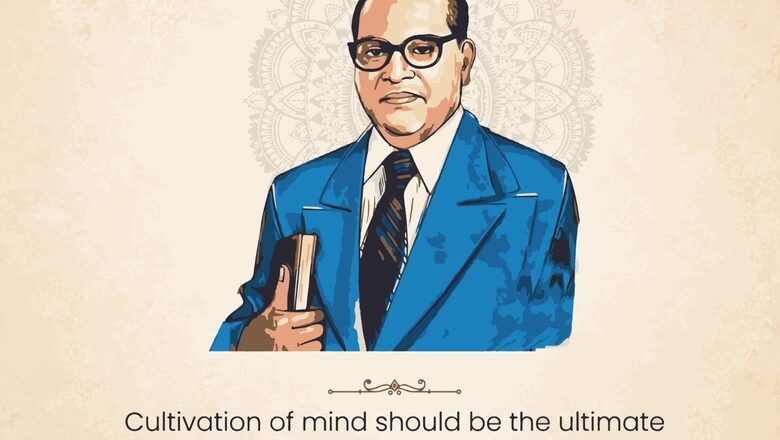
views
Bhimrao Ramji Ambedkar played a pivotal role in shaping modern India. Born on April 14, 1891, he rose to become India’s first law and justice minister, tirelessly fighting against the oppressive caste system throughout his life. Under his chairmanship as the Drafting Committee’s head, the Constituent Assembly meticulously crafted the world’s longest-written constitution. Posthumously, Dr Ambedkar, who passed away in 1956, received the Bharat Ratna, India’s highest civilian honour.
WHAT IS MAHAPARINIRVAN DIWAS?
Mahaparinirvan Diwas is a day to commemorate the death anniversary of Dr Ambedkar. He died on December 6, 1956, in Delhi. It is a day to reflect on Ambedkar’s legacy and his contributions to Indian society.
Dr Ambedkar was a champion of social justice and equality, and he fought tirelessly for the rights of the marginalized and oppressed. His work has had a profound impact on India, and he is remembered as one of the most important figures in Indian history.
FACTS ABOUT DR BR AMBEDKAR
- Dr Ambedkar’s life journey began in the military cantonment of Mhow, Madhya Pradesh, where his father, Ramji Sakpal, served as a Subedar in the British Army. Following Ramji Sakpal’s retirement in 1894, the family relocated to Satara district in Maharashtra, as Dr Ambedkar’s ancestors hailed from Ambadawe village in present-day Ratnagiri district of Maharashtra.
- Dr Ambedkar possessed exceptional linguistic skills, being fluent in nine languages. He embarked on a quest to pursue an Economics doctorate abroad, becoming the first Indian to earn a PhD in the subject from a foreign university.
- Dr BR Ambedkar’s autobiographical note, titled “Waiting for a Visa,” written across 20 pages, is currently used as a textbook at Columbia University. This insightful book, penned in 1935-36, chronicles Dr Ambedkar’s personal encounters with untouchability since his childhood.
- Dr Ambedkar’s statue stands proudly alongside that of Karl Marx in the London Museum, a testament to his global recognition.
- Ambedkar House, situated in the affluent Primrose Hill neighbourhood of London, was acquired by the Maharashtra government and transformed into a museum. This historic residence served as Dr Ambedkar’s abode during 1921-22 while he pursued higher education at the London School of Economics.
- Astonishingly, Dr Ambedkar possessed the world’s largest private library, housing an immense collection of over 50,000 books in Rajagriha.
- He played an instrumental role in the establishment of the Reserve Bank of India. The RBI’s inception in 1935 stemmed from the recommendations presented by the Hilton Young Commission. Notably, a majority of these recommendations were drawn from the principles outlined in Dr Ambedkar’s seminal work, “The Problem of the Rupee – Its Origin and Its Solution.”




















Comments
0 comment